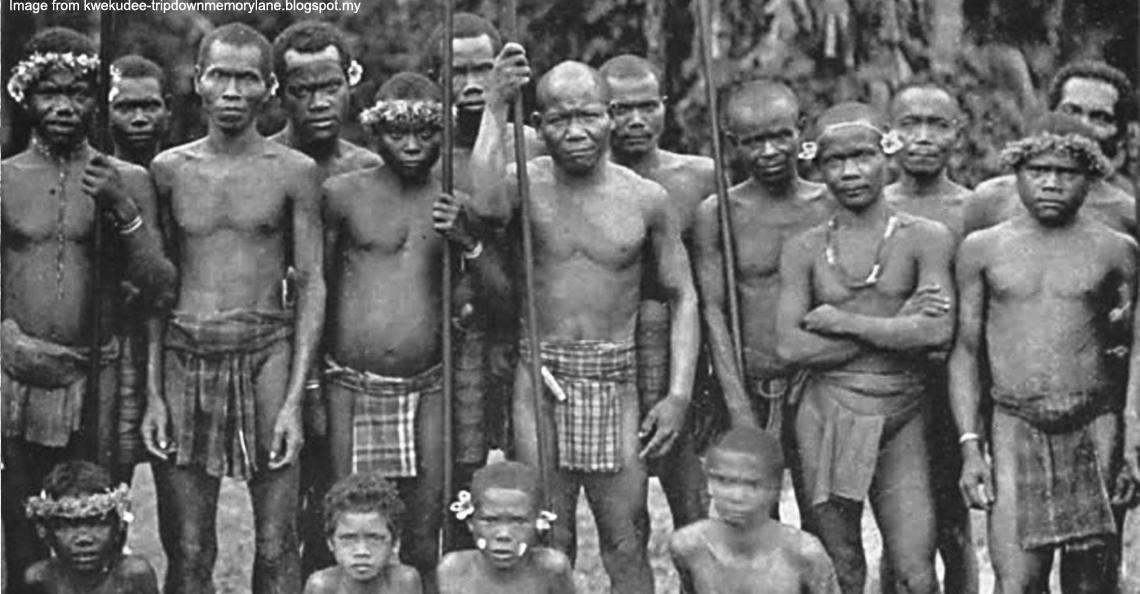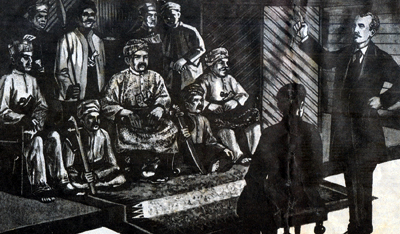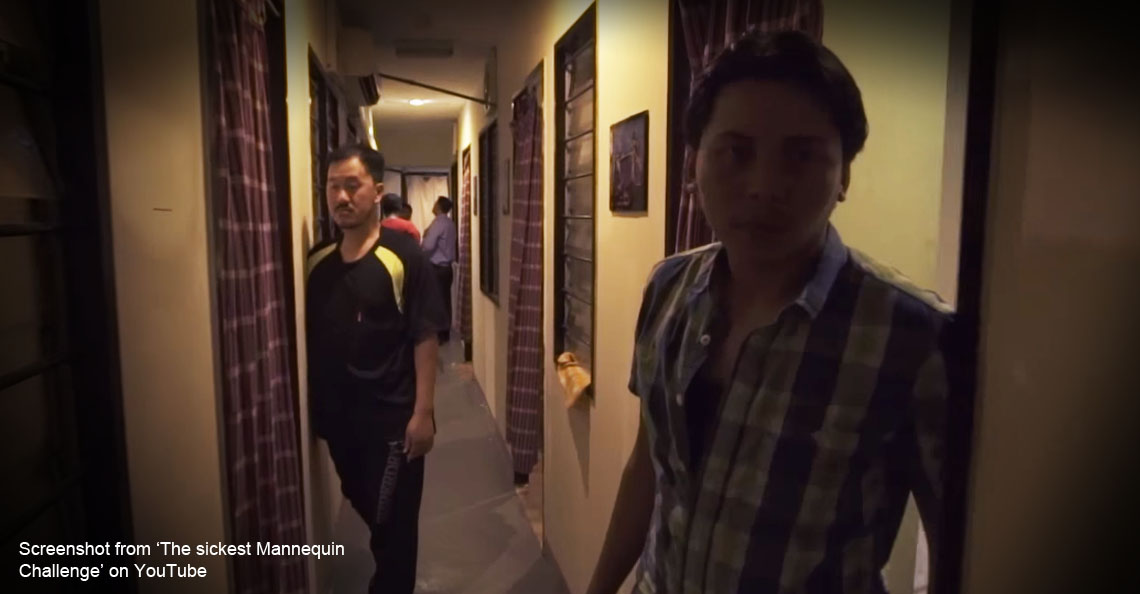The untold story of how Malays in the 1800s used Orang Asli as slaves

- 25.8KShares
- Facebook25.0K
- Twitter87
- LinkedIn77
- Email111
- WhatsApp494
[This story was originally written in BM. You can read it here.]
In the early years civilisation, owning slaves wasn’t as controversial as it is in modern times. When we think about slaves, we would most likely picture members of an ethnic minority, being forced to work as laborers with barely any clothes on, probably because they lost a war and became enslaved. But that is far from the truth.
Slavery was just like any other business. Ancient African civillisations would even sell off people from their own race, either to make a profit, to clear debt or even as a punishment. So there’s no need for bloodshed and war every time someone needed some slaves. With the right price, slaves can be easily be bought and sold, just like bok choys and chicken feet at a morning market.

Slaves were properties of their owners, they had no freedom nor civil rights, so they pretty much had to obey every word of their masters. It was also a symbol of wealth and status for people to own slaves, but the definition of being a slave has changed quite a bit today. If we say “I’M A SLAVE TO CILISOS PLEASE HELP ME“, people would probably tell us to take a vacation, or change jobs, neither which were viable options for slaves at that time.
But there were lesser known slavery practices hidden right in Malaysia’s history, and we didn’t know until SOSCILI went and wrote an article about it.
Malays were sent to South Africa as slaves, that’s why there’s a Malay village there now

If you think that only African people used to be slaves, now would be a good time to get educated. Like any colonised country, Malaya was not spared from the slave trade. Slavery was one of the main economic pillars for powerful European countries like Netherlands, Spain, and UK, especially after the 15th century. Because the Dutch owned much of Southeast Asia, many Indonesians, Singaporeans, and Filipinos, who openly opposed the Dutch were sent to South Africa to slave away as laborers.
But in the 1790s, the Napoleonic War shifted the balance of power in Europe. Because of the strategic importance of the Cape of Good Hope(in Africa), the British attacked the Dutch and invaded it before the French (who was also attacking the Dutch) could get their hands on it. Though the Cape was handed back to the Dutch briefly, the British eventually established full control over the Cape by 1814.
The most important part about this is the changes the British occupation brought to slavery in the Cape. Although the British is quite notorious for exploiting other races for their own benefit, they were actually pushing for the abolition of slavery in the British colonies! Prior to the Cape invasion, the British had already made carrying slaves in British ships illegal. But slavery was still pretty much legal in British colonies until the Slavery Abolition Act was introduced in 1833.
In the aftermath, the Malay slaves in South Africa were able to live as free men (and women), and they continued to settle there as normal citizens. This is actually how a minority group known as the Cape Malays came to exist over there.
Owning slaves was a Malay tradition, but J.W.W Birch tried to stop it

In those dog eat dog days, not only were the Malayan Malays forced to be slaves, they also used to own slaves too. In the 1870s, there was a war known as the Perang Sangkil that was fought between the Malay and Orang Asli. “Sangkil” was an Orang Asli term given to those who came from the Indonesian Islands, especially the Rawa and Mandailing, and it is said that it was the Sangkil that attacked and enslaved the Orang Asli.
During the conflict, the Orang Asli had to evade enslavement by constantly migrating from one place to another. Those who dared to fight back were mercilessly killed. According to a book based on the Perang Sangkil events, Orang Aslis were frequently sold as slaves or concubines to Malay Pembesars.
Surprisingly, the culture of the Malay enslavement of Orang Asli was also observed and recorded by the British officials who were stationed here. Among them was the Perak Resident J.W.W Birch, whose famous assassination was still being taught in our sejarah books. He described the slave practice in Malaya as follows:
“… by which men and women of the country of the Sakkais or wild people of the interior are captured after being hunted down, and are then sold, and made slaves. There poor people, from what I’ve seen, are worse treated than any other slaves.” – J.W.W Birch wrote in his journal, quoted from Taming the Wild: Aborigines and Racial Knowledge in Colonial Malaya by Sandra Khor Manickam
We all learned that J.W.W Birch was killed because he was meddling in the affairs of the Malay Pembesars. Plus, he showed no respect to the Malay customs and traditions, as he even forcefully tried to change them. But at the same time, the slave trade was one of the traditions he was looking to put an end to, a fact that we will not find in our textbooks.

Slavery is pretty illegal now, but it still persists around the world
It was only recently that CNN released a video detailing the alleged human trafficking syndicate in Libya. In the video, 2 African men were sold for USD400 (about RM1,634) each in a human auction:
But unlike those days, the world reacted quickly against the revelation. Not long after that, a United Nations Security Council meeting was called to investigate the matter. The Deputy Prime Minister of Libya, Ahmed Metig, said through the Libyan government Facebook that they will investigate the matter. But although we are many centuries ahead of the European colonisation era, the global circumstances doesn’t seem to have changed much:
“The refugees are from several African countries and they say they have fled war, poverty and unemployment in their countries … They have taken a tough journey through the desert and they have paid people smugglers to get to Libya to try to cross the Mediterranean to Europe.” – quoted from Al Jazeera reporter Mahmoud Abdelwahed
In Malaysia, we face a similar situation with student trafficking victims. R.AGE recently did an exposé about the syndicates in Malaysia that are exploiting foreign students who are seeking to study here. These syndicate agents dupe unsuspecting students into paying more than RM10,000 for arrangements to study in Malaysia. When they arrive here, they find that they are in the country illegally, placed in fake schools, extorted for more money, and are forced to work as construction workers to survive and pay off their debts.

Even in a more atas country like Australia, we still hear the same story of systematic abuse of human labor. After paying agents to arrange for “legitimate” fruit picking jobs in Australia, some (including Malaysians) found themselves living as slaves over there. Besides being payed way below the minimum wage, living in rundown sheds, and sleeping in makeshift bedrooms, they also had to pay for their own rent and transportation, leaving some with no nett income at all.
But we’re not living in the 1800s anymore, now we can actually report abuses

Based on 2016 United Nation estimates, the human trafficking industry generates USD 40 billion (RM163 billion) yearly, and more than 2 million people from 127 countries are sold around the world. As the examples above illustrate, slavery is not some ancient practice from the past, and it is often the underprivileged that are exploited and cheated of their money and freedom.
Slavery has never discriminate against skin colour or ethnicity. Although Europeans are more commonly thought of as the ones doing the enslaving, the truth is they have also been on the receiving end, and had been enslaved by others as well. So instead of shifting the blame, the safekeeping of human rights begins at the individual level, as the former first lady of the United States puts it:
“Where, after all, do universal human rights begin? In small places, close to home — so close and so small that they cannot be seen on any maps of the world. […] Unless these rights have meaning there, they have little meaning anywhere. Without concerted citizen action to uphold them close to home, we shall look in vain for progress in the larger world.” – Eleanor Roosevelt former first lady of the United States
If you’ve any cases to report, you can contact the police (999), LPPKN (15999), or SUARAM (03-7954 5724).
- 25.8KShares
- Facebook25.0K
- Twitter87
- LinkedIn77
- Email111
- WhatsApp494



